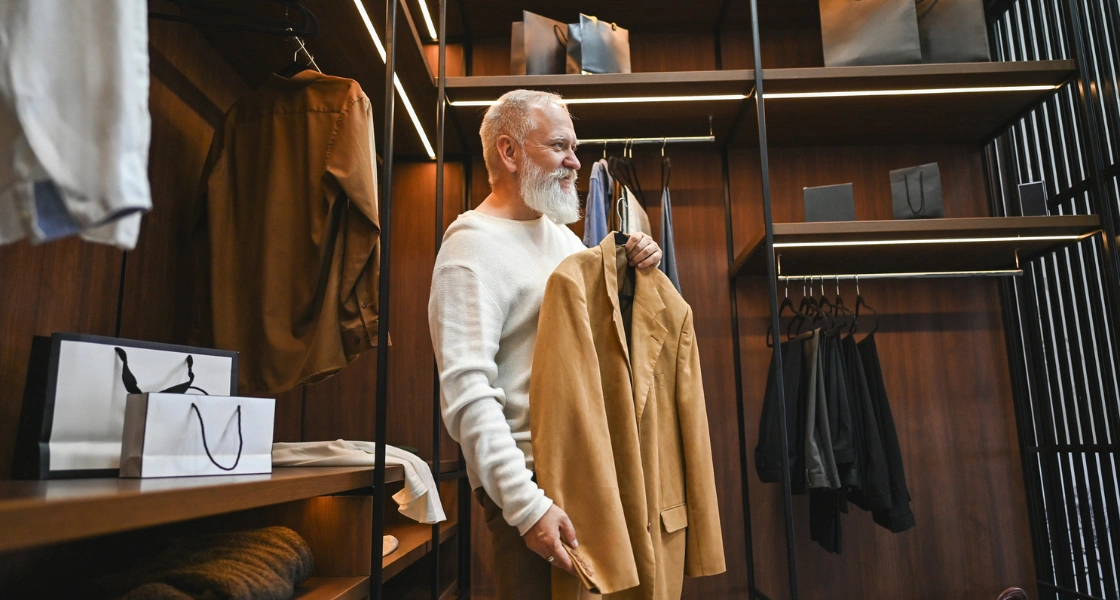Retail
Clienteling: a growth driver for luxury brands
28 August 2025

But what is its role in increasing revenue? It’s about building authentic connections, offering advanced personalisation, and creating memorable experiences that not only justify the premium price but also embed the brand into the client’s lifestyle.
Understanding clienteling: more than a strategy, a philosophy
Clienteling can be defined as the techniques used by sales advisors to establish long-term relationships with key clients. The goal is to shift from a reactive sales model to proactive, personalised service, based on deep knowledge of each client’s preferences, purchase history, and lifestyle.
This approach rests on three fundamental pillars:
- Data collection and analysis: Every interaction is an opportunity to gather valuable insights. From important dates (birthdays) to style preferences and past purchases, this data forms the foundation of successful personalisation.
- Personalised communication: Armed with this information, advisors can engage in relevant and authentic conversations. Gone are the days of mass communications—in their place come exclusive invitations, tailored recommendations, and thoughtful messages.
- In-store and beyond experiences: Clienteling goes beyond the walls of the store. It shines through bespoke welcomes, exclusive services like private styling, and attentive post-purchase follow-ups, extending the luxury experience well beyond the transaction.
The quantifiable impact of clienteling on revenue
Investing in a clienteling strategy is not just a leap of faith but a business decision backed by tangible results. The numbers speak for themselves, showing a direct correlation between the quality of customer relationships and financial performance.
Increasing customer lifetime value (CLV)
A loyal, engaged customer spends more—and more often. According to Bain & Company, a 5% increase in customer retention rates can boost profits by 25% to 95% (Bain & Company, “The Value of Customer Retention”). Clienteling is the main catalyst for this loyalty. By creating a strong emotional bond, brands not only secure repeat purchases but also turn customers into brand ambassadors.
Higher average basket value
Personalisation is the key to unlocking additional sales. An advisor who knows their client’s tastes can suggest complementary pieces or new arrivals that align perfectly with their expectations.
- Personalised recommendations work: 75% of consumers are more likely to buy from a brand that recognises them by name and knows their purchase history (Epsilon, “Power of Me Data Study”).
- In-store, effective clienteling can increase the average basket value by 30% to 50%, turning a simple visit into a private styling session (McKinsey, “The State of Fashion 2023”).
Real-world examples in the luxury industry
Several luxury houses have made clienteling the cornerstone of their success.
- Louis Vuitton: The brand heavily invests in training its advisors to become true “relationship artisans.” Using dedicated digital tools, advisors can track each client, anticipate their needs, and invite them to exclusive events, creating a sense of belonging to a very select club.
- Gucci: Through its “Gucci 9” programme, the brand has set up a network of advisors constantly connected to their clients via messaging apps. They share previews, manage reservations, and offer luxury concierge services, generating a significant portion of revenue from their VIP clientele.
- Natan: The Belgian couture house has built its reputation on ultra-personalised service. Advisors intimately know their clients and offer private appointments where collections are prepared in advance based on the client’s preferences and body shape. This approach ensures exceptional conversion rates.
Trends shaping the future of clienteling
Clienteling is evolving alongside technology and consumer expectations. To remain relevant, it must integrate innovations while preserving the authenticity of the human relationship.
1. Digital clienteling and AI
Digital tools don’t replace advisors—they enhance their capabilities. Modern clienteling platforms, often powered by artificial intelligence, allow brands to:
- Centralise customer data from all channels (online, in-store, social media).
- Suggest relevant actions to the advisor (e.g., “It’s Mrs Smith’s birthday next week, suggest this piece from the new collection”).
- Automate low-value tasks to free up more time for human interaction.
Nearly 60% of luxury companies plan to invest in AI to improve personalised customer experiences in the coming years (Capgemini, “Luxury and Technology Report 2023”).
2. Real-time hyper-personalisation
The luxury of tomorrow will be contextual. Thanks to technology, an advisor could know when a loyal client enters the store and instantly receive key information on their tablet: their recent purchases, online wishlist, and even their mood detected by emotion sensors (a developing technology). This enables a seamless, perfectly tailored experience in real time.
3. Sustainability and ethics at the core of relationships
The new generation of luxury consumers is highly attentive to brand values. Clienteling must, therefore, incorporate this dimension. Advisors can inform clients about the origin of materials, artisanal production processes, or the brand’s sustainability commitments. This transparency builds trust and creates a deeper connection based on shared values.
Conclusion: human connection, the true asset of luxury
Ultimately, clienteling is much more than a marketing strategy or a sales tool. It is the purest manifestation of luxury brands’ DNA: exceptional service centred on the individual. In an increasingly digital world, attentive and expert human interaction remains the ultimate differentiator and the most powerful growth driver.
Investing in the right tools and, above all, in training talent capable of mastering this art is not an expense—it is a strategic investment. As luxury products inspire dreams, it is the relationships built around them that foster loyalty and ensure long-term prosperity. The question is no longer whether to adopt clienteling, but how to elevate it to the level of operational excellence.


